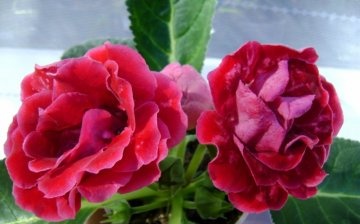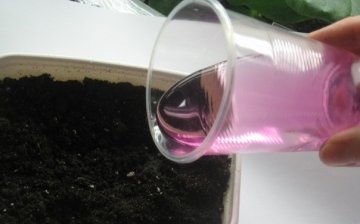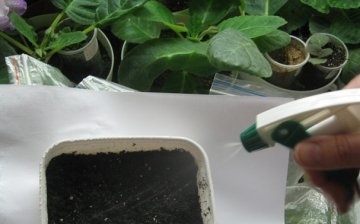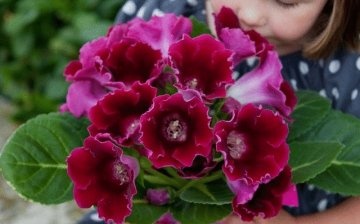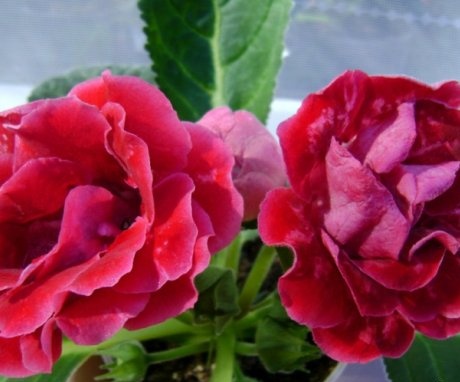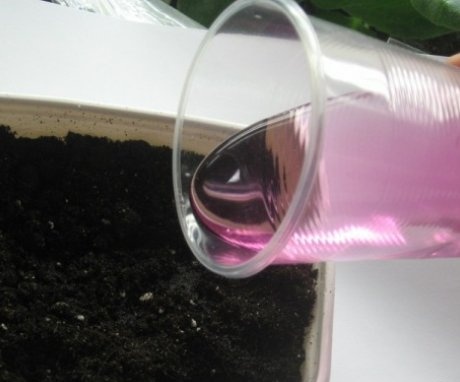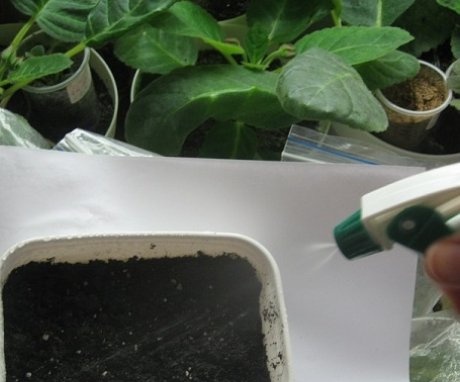How to properly grow gloxinia from seeds
Gloxinia - one of the most beautiful indoor plants. She belongs to the genus Gesneriaceae. Its flowers, similar in shape to bells, have a variety of colors. There are 14 known species of this plant. It is more difficult to grow gloxinia from seeds than vegetatively from a leaf. But if certain conditions are met, this is quite possible.
Content:
- Gloxinia: description
- Preparation of soil and materials
- Sowing gloxinia seeds and caring for seedlings
- Houseplant Care Tips
Gloxinia: description
Gloxinia grows wild in Brazil. There she is a common plant and has about 20 species. It is a perennial herb with nodules on root system... The basis for the creation of well-known hybrids was 2 of them. The name is associated with the name of Benjamin Peter Gloxin, who first described the plant. It has another name, sinningia. It comes from the name of a gardener from Germany W. Sinning, who lived in the XIX century.
It is believed that synningia and gloxinia are two different plants, and it is synningia that everyone calls gloxinia that grows on our windows. Gloxinia has a scaly oblong rhizome. And in sinningia it is smooth, rounded. Be that as it may, we have a beautiful plant with lovely flowers that adorns our lives.
Gloxinia is a potted plant with large velvety leaves on succulent roots and large funnel-shaped flowers.
Their colors are very diverse, monochromatic and consisting of several colors or tones, including white, pink, blue. There may be blotches in the form of specks, dashes, borders. The fruit is a capsule with a large number of small brown oblong seeds. 1 g contains 25 thousand of them. The plant is grown on the southern windows.
Gloxinia species:
- Perennis with smooth leaves and blue or purple flowers.
- Gymnostoma (naked mouth) is brick-colored with brown specks.
- Ericoides with small flowers and bright black-veined leaves
- Lindeniana with leaves adorned with dark veins.
- Nematanthodes with bright orange flowers are grown in the garden.
- Purpurascens with beautiful pubescent leaves and pink flowers, tapered at the end.
- Sylvatica with beautiful bright red flowers and narrow leaves.
The most famous varieties of gloxinia (sinningia):
- Royal with large velvety leaves decorated with silvery veins and drooping purple flowers. Grown since the beginning of the twentieth century.
- Gloxinia is beautiful in appearance, similar to royal, but its leaves are lighter, without contrasting veins, flowers are purple or pink in different shades.
Preparation of soil and materials
In order to grow gloxinia from seeds, you need to procure or buy them. It can be the products of the "Aelita" company, the Dutch or the English company Unwins. Check their expiration date. Seeds can be obtained at home. To do this, you need to carry out pollination. They take two flowers, apply pollen from one to the pistil of the other. The pollinated flower is marked. I am waiting for about a month until the seed box ripens. Cut it off, put it in a cup or jar. Soon, the seeds spill out.
To grow seedlings, you need the following tools and materials:
- Plastic containers in which to grow seedlings... They can be of different depths: shallow for sowing, deep for dives plants.
- Drainage from expanded clay, gravel, vermiculite or coarse sand.
- Soft soil.
- Plastic wrap with a set of colored rubber bands or glass.
- Potassium permanganate.
Choose a boarding time. If it is possible to provide backlighting and a temperature of 18 degrees, seeds are sown in January or February. Additional lighting is carried out with a fluorescent lamp (50 W) for 14 hours a day for 2 to 3 months. If there are no such conditions, it is better to wait until March or April.
Several holes are made in the containers through which excess moisture will escape into the pallet.
Lay a drainage layer. A layer of soil is poured on top. It should be soft so that it is easy to loosen it. Can be purchased at the store or prepared at home. Take 4 parts of leafy earth and humus, part of the sand. You can lay a layer of coniferous-deciduous soil on the bottom, and the second layer is mixed with peat.
Spill with a weak solution of potassium permanganate or disinfect in another way (roasting in the oven). Sowing is started the next day. The soil by this time will still be quite wet.
Sowing gloxinia seeds and caring for seedlings
Spread the seeds evenly throughout the container. This is not easy to do because they are very small. You can use a thin stick. It is not necessary to plant seeds in the ground. Press down with a wooden board. If the soil is dry, water it with a spray bottle. The top of the container is covered with plastic wrap. It is better if it is thin. Fix it with rubber bands. Can be covered with glass. Install in a well-lit place. The temperature is maintained between 20 and 22 degrees.
Seedling care:
- Ventilate containers for 10-30 minutes every day to prevent mold growth. But you cannot leave containers open for a long time. Seeds that have hatched can die from land. Water only in case of severe drying out. Usually this is not necessary, because there is enough moisture. Moreover, it evaporates from the soil and settles in the form of condensation on the film. Opening it, turn it over or shake off the drops.
- After a week or two, sprouts begin to appear. Their roots are almost on the surface, so high humidity must be maintained constantly. The sprouts do not adhere well to the soil, so they need to be watered very carefully. Even a spray bottle can blow off a young plant. Install the container so that the sun's rays do not hit them.
- The next stage of growing is dive... Seedlings often grow unevenly, so they need to be replanted gradually. Do this very carefully so as not to break small plants. Place in another prepared container. A little buried in the soil.
- After a few days, when the seedlings begin to take root, you can feed them. The procedure is repeated every two weeks. In order for the plants to adapt to natural conditions more quickly, the airing time is constantly increased. When they stop fading, they completely remove the film.
You need to dive every month. This contributes to the growth of tubers. Each time the distance between the plants is increased by 4 cm. After 3 months, the plant is planted in a permanent place. Some growers do not dive gloxinia as often. They plant the plant immediately in a permanent place. Gloxinia pots are wide, but shallow, with large holes in the bottom.
After a few months, flower buds appear. They need to be removed for the gloxinia to grow stronger. But if you really want to look at the flower, you can leave one bud. You do not need to prune young plants for the winter. Plants are sent for wintering, which have grown 6 pairs of leaves.
Houseplant care tips
It is necessary to water it abundantly with settled water, but not from above into the pot, but from the pallet or onto the ground around the plant. The water temperature must be at least 17 degrees.The ground should be constantly moist, but not wet. Spraying is carried out so that small drops do not fall on the leaves, and the air is humidified.
Fertilized with fertilizer for flowering plants once a week.
An adult plant blooms from spring to autumn, then its aerial part disappears. In winter, the flower pot is removed to a cool place, but so that the earth in it does not drop below 10 degrees. Gloxinia comes to life in the spring. Then watering and feeding are resumed.
Gloxinia does not like excess moisture. Therefore, when watering, you need to ensure that drops of water do not fall on flowers and leaves. Root decay is especially dangerous for a plant. The main pest is aphid... They fight it by treating it with insecticides.
More information can be found in the video:




